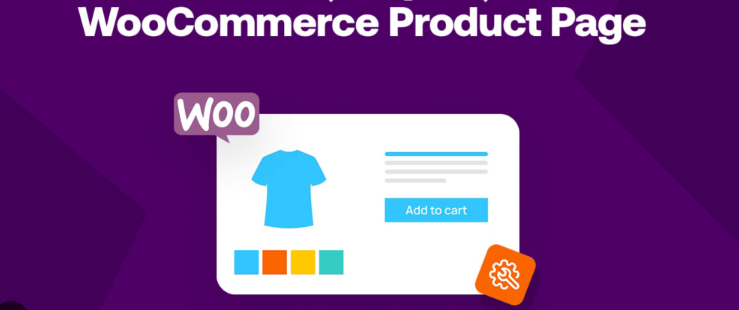Inventory management is a core aspect of e-commerce operations.WooCommerceAlthough it comes with basic inventory features, additional configuration is needed to realize real-time updates to avoid overselling. In this article, we will introduce how to achieve automatic synchronization and multi-platform management of WooCommerce inventory through settings and plug-ins to help you create an efficient inventory system.
![Image [1] - How to achieve real-time inventory updates after WooCommerce activation: a hands-on guide to e-commerce inventory management](http://gqxi.cn/wp-content/uploads/2025/06/20250606141523907-image.png)
I. Introduction to WooCommerce Default Inventory Management Features
WooCommerce provides the following inventory management options on the product edit page:
- SKU (Stock Keeping Unit Number)
- stockpile
- Inventory status (in stock, out of stock, pre-order)
- Whether to allow orders to be placed without stock
- Inventory threshold alerts
While this functionality meets the basic needs of some small stores, it relies on manual updates or periodic adjustments and does not have the ability to "change in real time".
![Image [2] - How to achieve real-time inventory updates after WooCommerce activation: a practical guide to e-commerce inventory management](http://gqxi.cn/wp-content/uploads/2025/06/20250606141836352-image.png)
II. Why do we need real-time inventory updates?
- Avoid overselling and understocking
Multi-platform selling scenarios such as WooCommerce + Shopee,Amazonian, offline POS, once inventory is not synchronized in a timely manner, it can lead to non-fulfillment of orders. - Enhance Customer Satisfaction
Users are able to see the exact quantity in stock before purchasing, which helps to increase confidence in purchasing. - Optimizing supply chain management
Enables operations, warehousing, and purchasing teams to make more efficient decisions based on real-time data.
III. Solutions to achieve real-time inventory updates
Option 1: Enable automatic inventory synchronization plug-in
Recommended Plugins:
1. ATUM Inventory Management for WooCommerce
![Image [3] - How to achieve real-time inventory updates after WooCommerce activation: a hands-on guide to e-commerce inventory management](http://gqxi.cn/wp-content/uploads/2025/06/20250607175436135-image.png)
- Highly visual inventory console
- Support real-time update of product inventory
- Can be used in conjunction with the Incoming Orders, Vendors module
2. Stock Sync for WooCommerce
![Image [4] - How to achieve real-time inventory updates after WooCommerce activation: a practical guide to e-commerce inventory management](http://gqxi.cn/wp-content/uploads/2025/06/20250607175512684-image.png)
- Can be timed from an external file (CSV/XML(/Google Sheet) Synchronize Inventory
- Implement automated inventory update logic
- be in favor of FTP,URLGoogle Drive Import Source
3. WooCommerce REST API + Third party systems integration
![Image [5] - How to achieve real-time inventory updates after WooCommerce activation: a practical guide to e-commerce inventory management](http://gqxi.cn/wp-content/uploads/2025/06/20250607175611983-image.png)
- Realize real-time updates by interfacing with ERP, WMS and other systems through WooCommerce REST API.
- Supports POST/PUT for automatic update of inventory fields (e.g.
stock_quantity)
Option 2: Use Webhook to Trigger Inventory Changes in Real Time
WooCommerce supports a built-in Webhook mechanism that can be used to automatically trigger inventory change events after order fulfillment, returns, cancellations, and more.
Set the path:
WooCommerce > Settings > Advanced > Webhooks
- Add a new Webhook, select the trigger event (e.g. Order Created / Order Updated)
- Specify a URL to send inventory change data to an ERP or cloud function service (such as AWS Lambda)
![Image [6] - How to achieve real-time inventory updates after WooCommerce activation: a practical guide to e-commerce inventory management](http://gqxi.cn/wp-content/uploads/2025/06/20250606143538129-image.png)
IV. Multi-channel synchronization of inventory (for cross-platform sellers)
If you sell products on multiple platforms (e.g. Shopify, Lazada, Amazon) at the same time, the following synchronization tools are recommended:
1. Multi-Channel Inventory Management(e.g. TradeGecko, Zoho Inventory)
- Integrate WooCommerce with multiple sales channels
- Achievement of harmonized management of the central inventory database
- Real-time master inventory update for all platform orders to avoid duplicate sales
2. Use an inventory center or build your own API gateway
- WooCommerce as a node, other platforms integrated via interfaces
- It is recommended to use a middle-tier database or Redis cache for fast synchronization.
V. Practical tips and advice
![Image [7] - How to achieve real-time inventory updates after WooCommerce activation: a hands-on guide to e-commerce inventory management](http://gqxi.cn/wp-content/uploads/2025/06/20250606144228566-image.png)
- Enable Low Stock Alert: Set the inventory alert value and automatically email the operator to notify them to replenish the stock in time.
- Product Warehouse Synchronization: If there are multiple warehouses, use the plugin to manage the inventory of each warehouse and enable automatic distribution of shipments.
- Automatic Returns Inventory Processing: After an order is canceled or refunded, the "Return Inventory" feature is enabled to ensure accurate inventory.
- Regular interfacing with warehouse inventory systems: nightly calibration of inventory through automated scripts or task schedules.
VI. Summary
Real-time inventory update is a key step to improve the professionalism and operational efficiency of WooCommerce eCommerce platform. Through plug-ins, APIs, Webhooks, or ERP system integration, you can create an automated, accurate, and responsive inventory update mechanism that effectively reduces operational risk, improves customer satisfaction, and lays a solid foundation for multi-platform expansion.
Link to this article:http://gqxi.cn/en/57826The article is copyrighted and must be reproduced with attribution.

























![Emoji[jingya]-Photonflux.com | Professional WordPress repair service, worldwide, rapid response](http://gqxi.cn/wp-content/themes/zibll/img/smilies/jingya.gif)






No comments